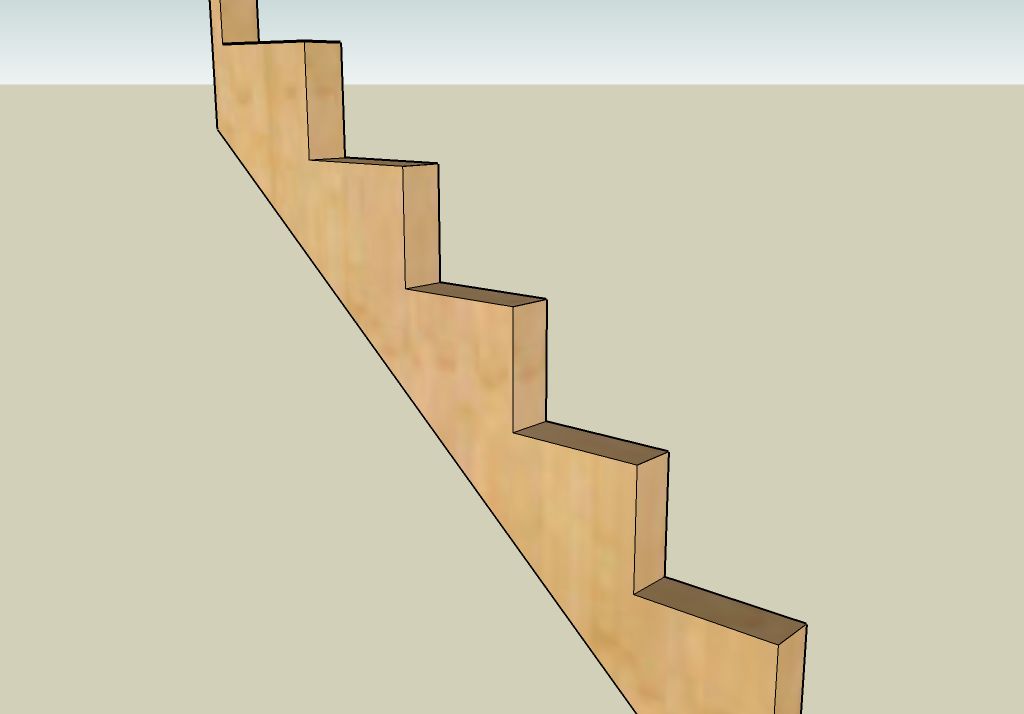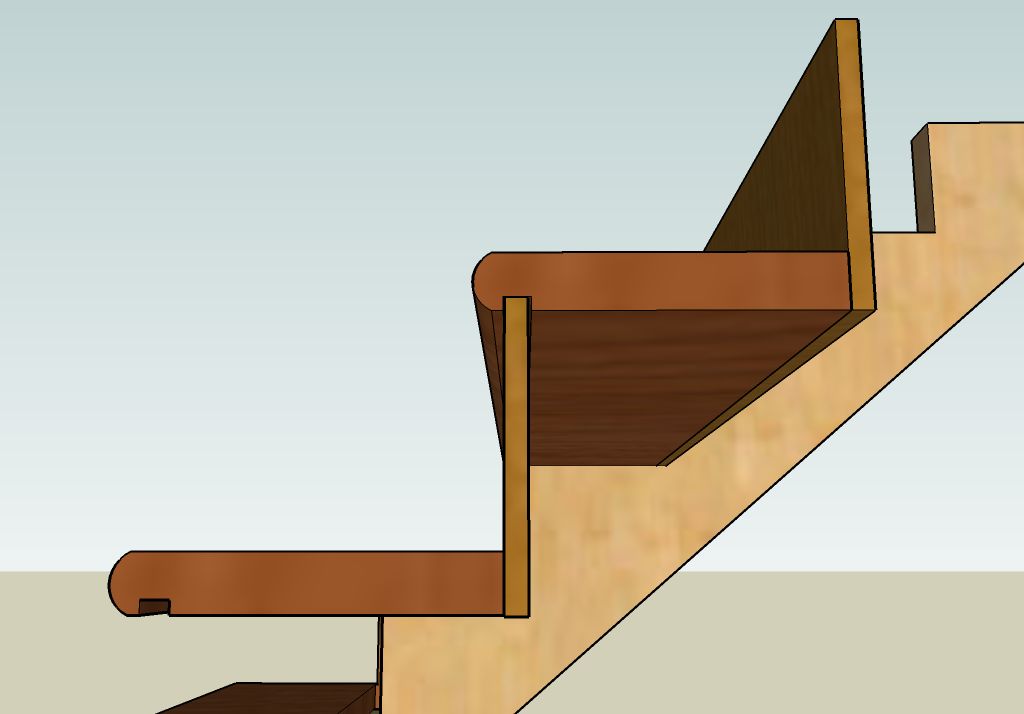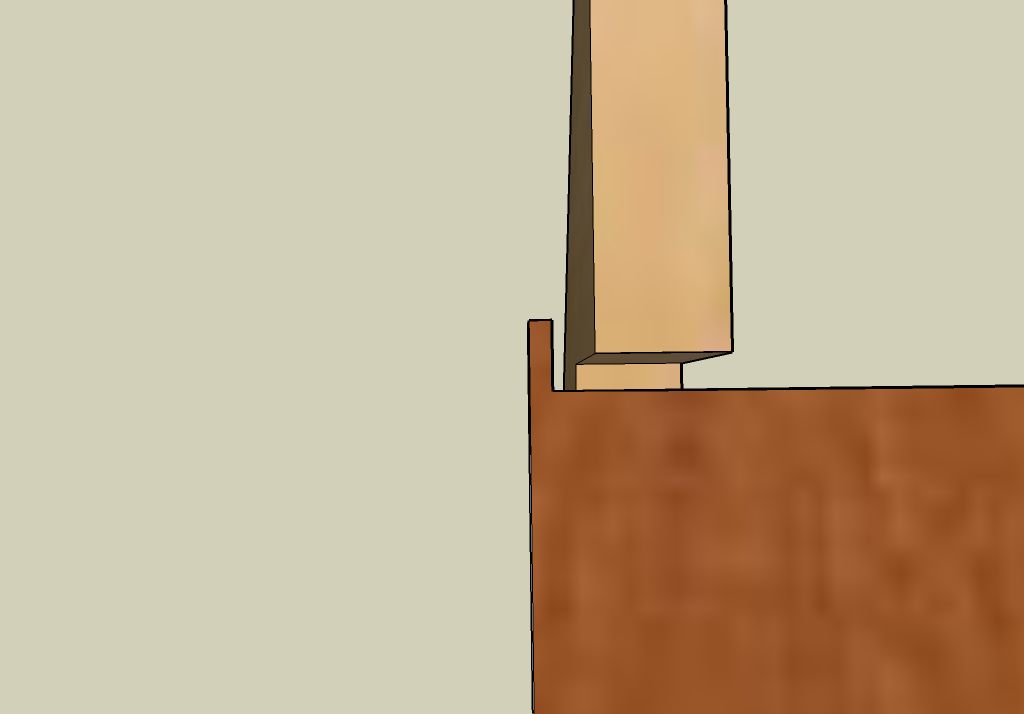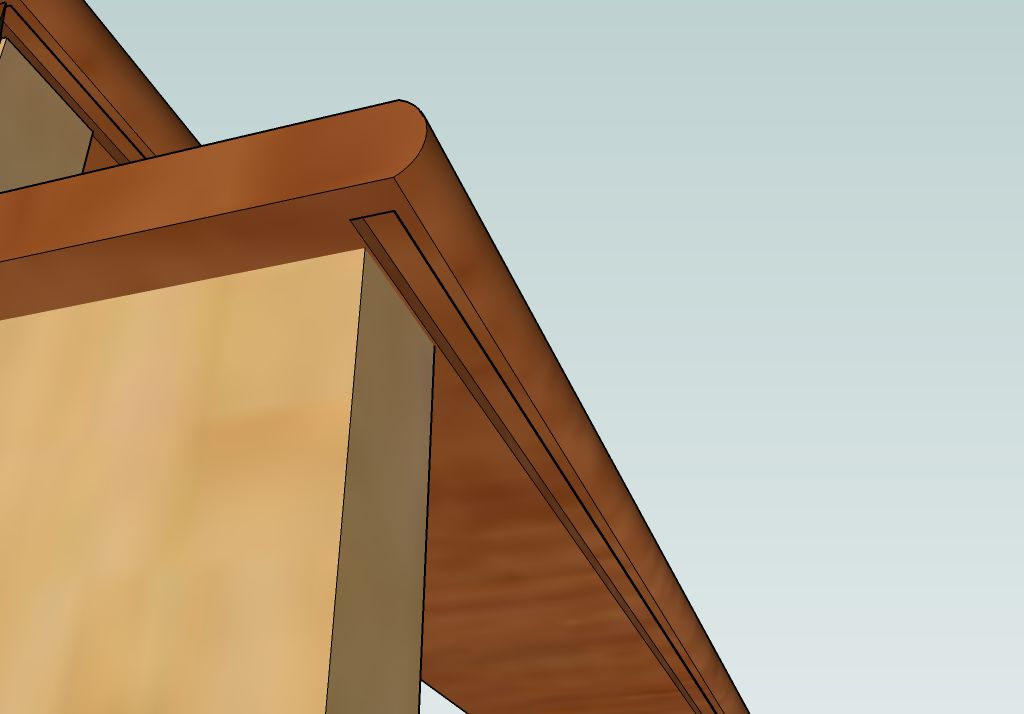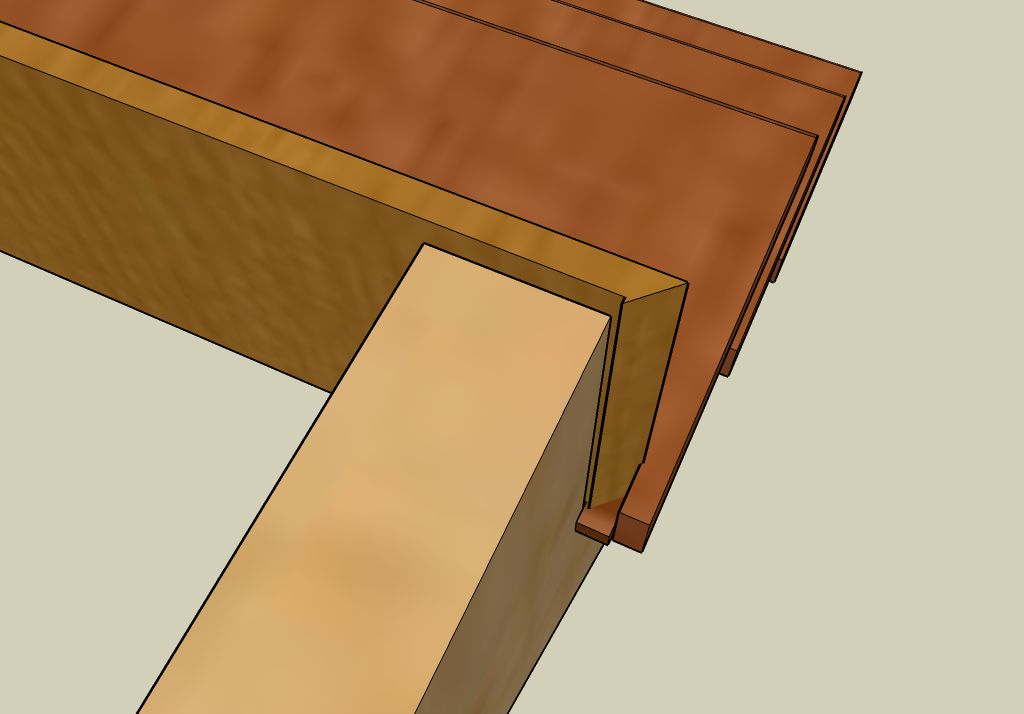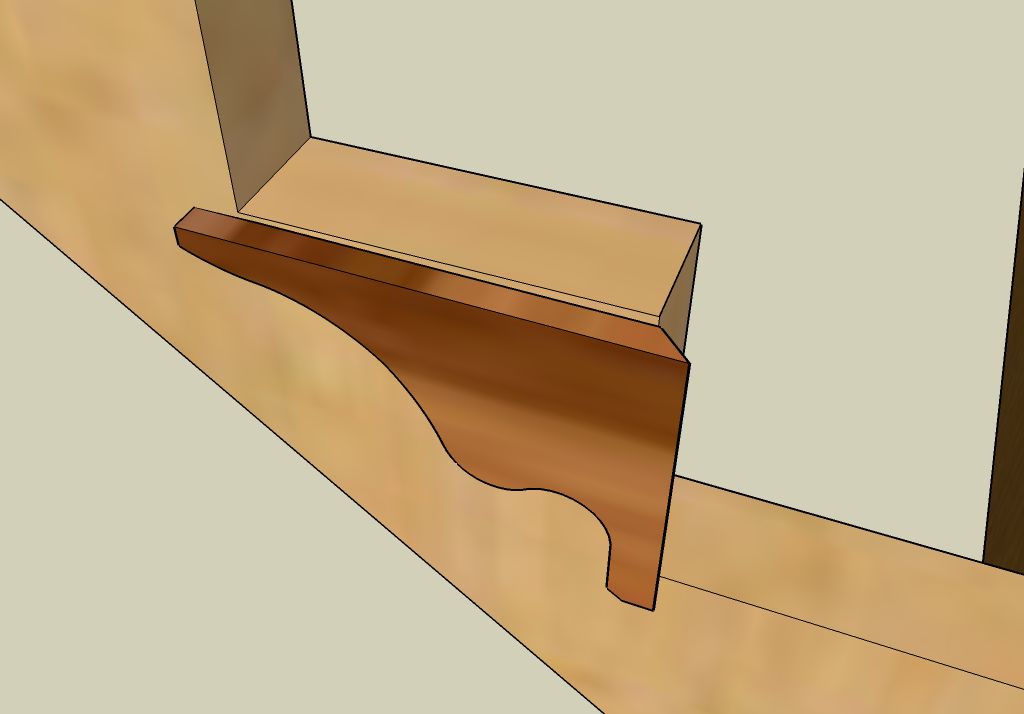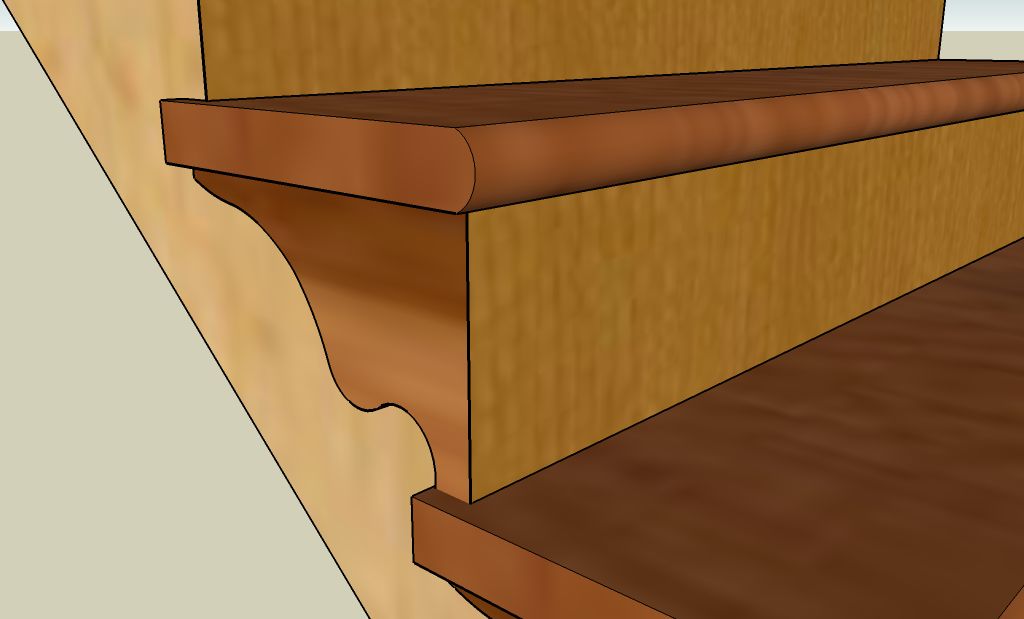Cut string stairs
{UnderConstruction}
Strings
Strings can either be cut out from larger timber, or triangular sections screwed on to provide the step platforms. The important dimension from a strength point of view is the distance running diagonally across the narrowest bit of the string at the back of each tread.
Treads and Risers
Similar to that used on a closed string staircase. The riser can be screwed to the back of each tread, and the top of it housed in a rebate routed in the underside of each tread.
If one side of the stairs are closed string, then the risers and treads would be housed in rebates and fixed with wedges in the normal way.
Cut String Details
On the cut end, the tread sails over the string, and may also have a returning section to add to the decorative effect:
The rebate for the riser will need to be stopped on the cut end to save spoiling the appearance of the end of the tread:
The riser is cut to sit on the base of the string behind the tread and to rise a little higher than the base of the next tread (so it can sit in the rebate on the tread. To make the end look more attractive it is common to mitre the end of the riser:
A decore end block thatn then be made to plant on to the side of the string, and mate with the mitre on the riser. Tis can be as simple or ornate as required:
The final result might look a little like:
Some scotia or ogee profile moulding could also be added under the nosing of each tread, and returned round the side on the cut string end, to give added support to the tread nosing, and also enhance the decorative effect.
